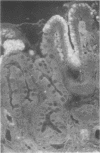Abstract
Glycoconjugate structure in upper gastrointestinal epithelium was studied using five lectins to determine the relationship between aberrant differentiation and glycoconjugate expression. Specimens of normal esophagus, stomach, and duodenum were examined and compared with specimens of columnar metaplasia in the esophagus (Barrett's esophagus) and specimens of adenocarcinoma of the esophagus and stomach. Specific terminal glycoconjugate structures were found for the esophagus, stomach, and duodenum. Minor differences were found between the antral and fundic gland mucosae, reflecting their respective cell populations. In biopsies of Barrett's esophagus, gastric-type columnar metaplasia expressed glycoconjugates indistinguishable from those in the normal stomach. In specialized-type columnar metaplasia, a more restricted expression of glycoconjugates was seen resembling the normal duodenum. The presence of low grade dysplasia in Barrett's esophagus associated with adenocarcinoma had no impact on glycoconjugate expression. However, a distinctive difference in glycosylation was seen in high grade dysplasia of the columnar-lined esophagus and in adenocarcinoma of the esophagus and stomach. Barrett's esophagus is a morphological mosaic in which the glycoconjugate expression resembles that seen in the normal stomach and duodenum. However, in high grade dysplasia and carcinoma, variable deletion of glycoconjugate expression can be found.
Full text
PDF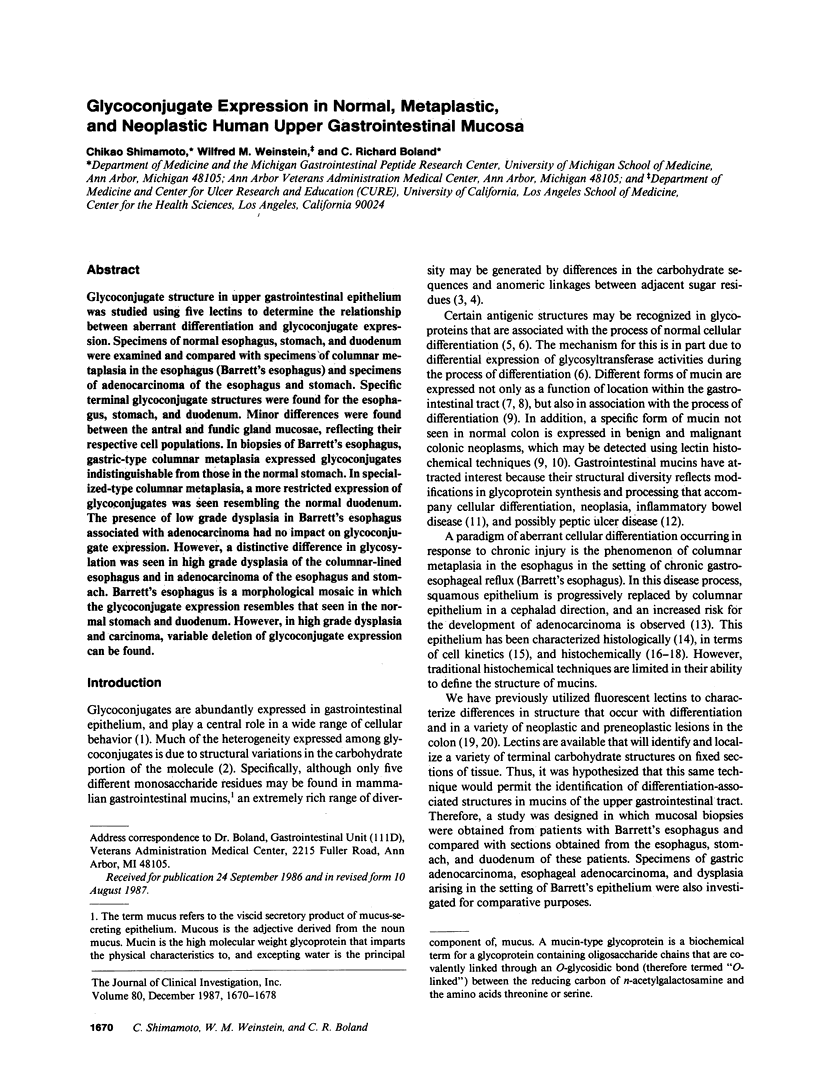
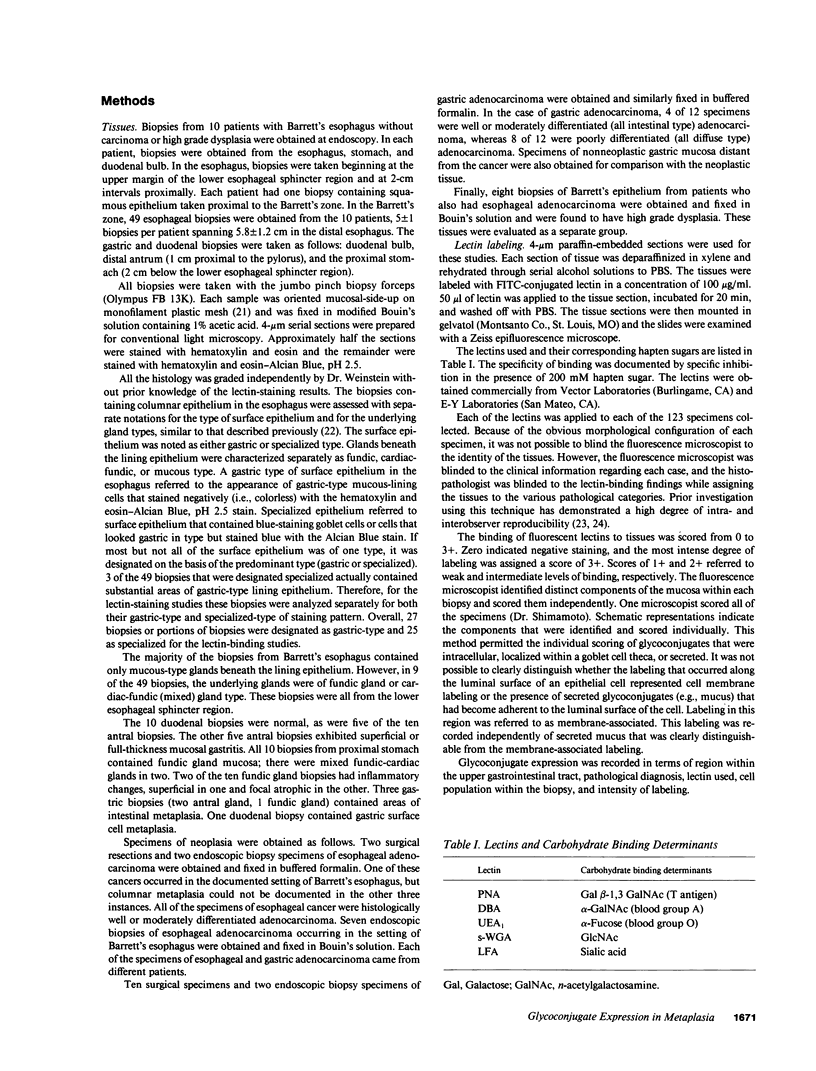
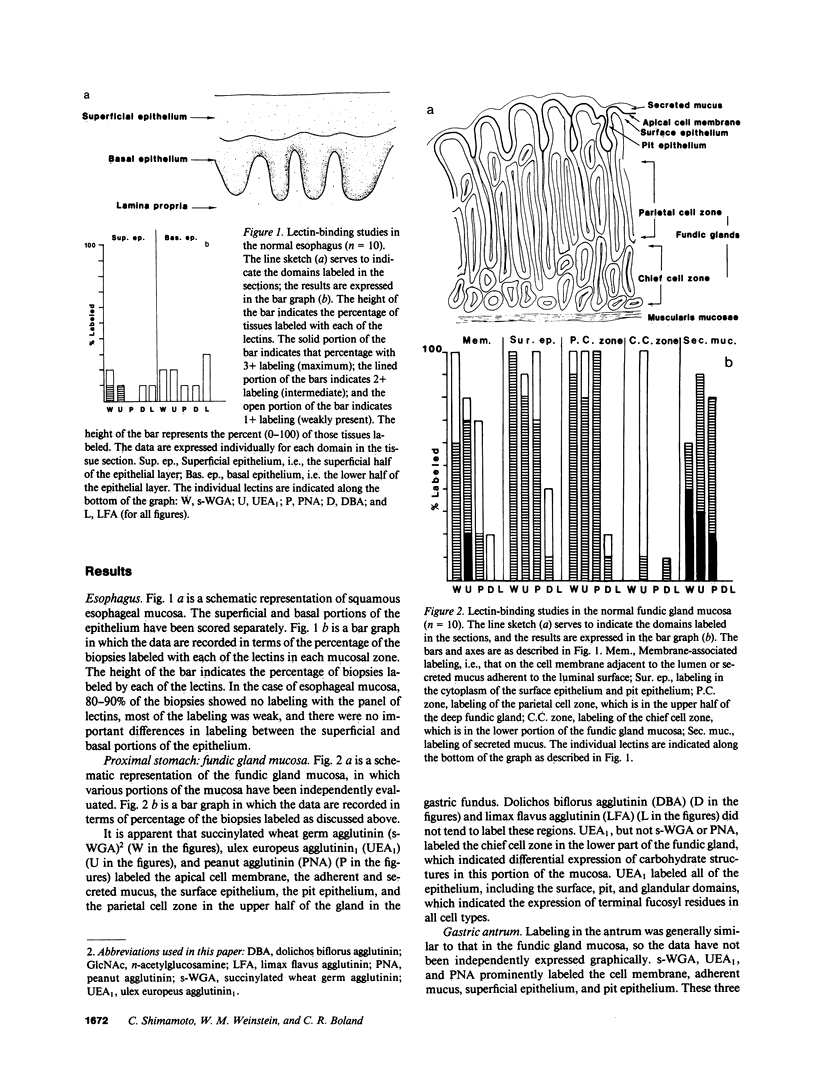
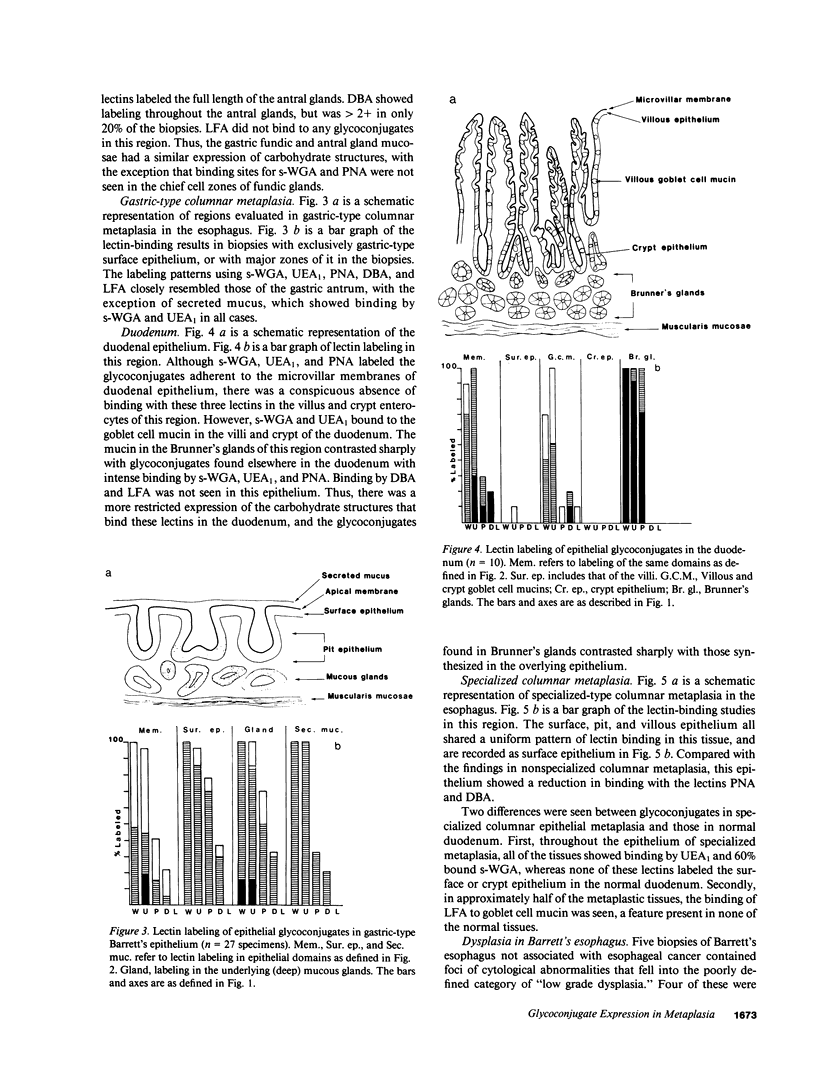
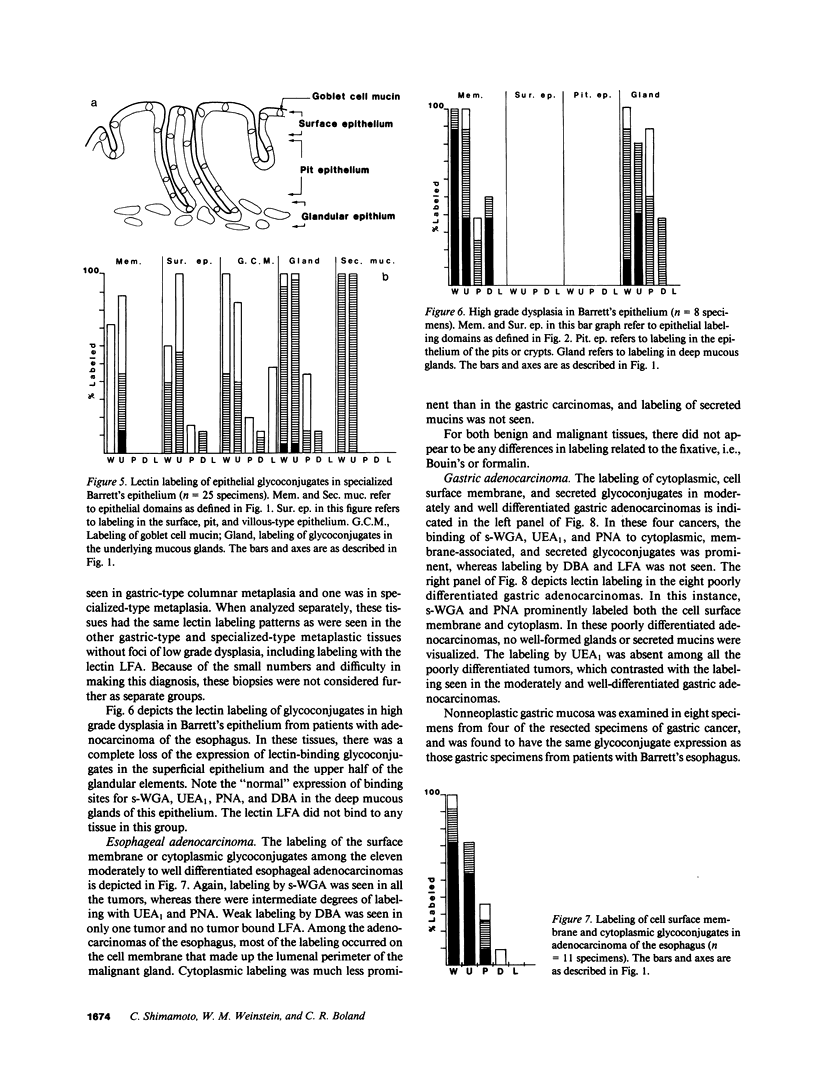
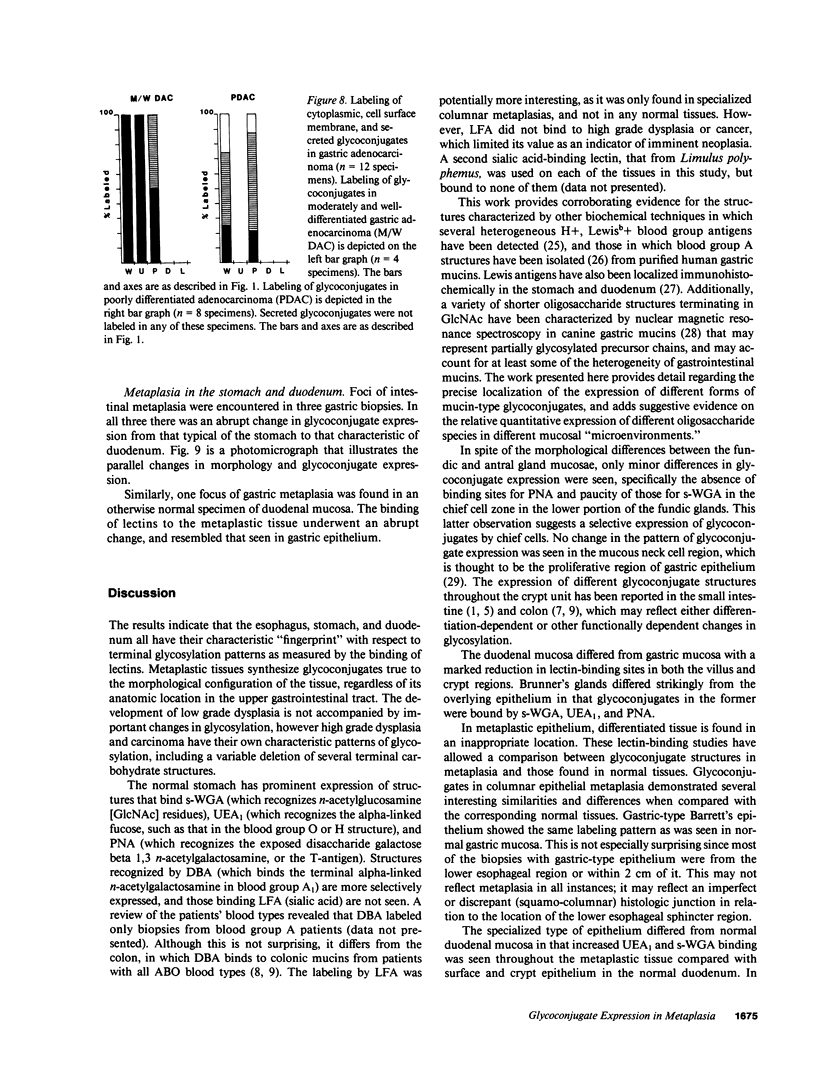
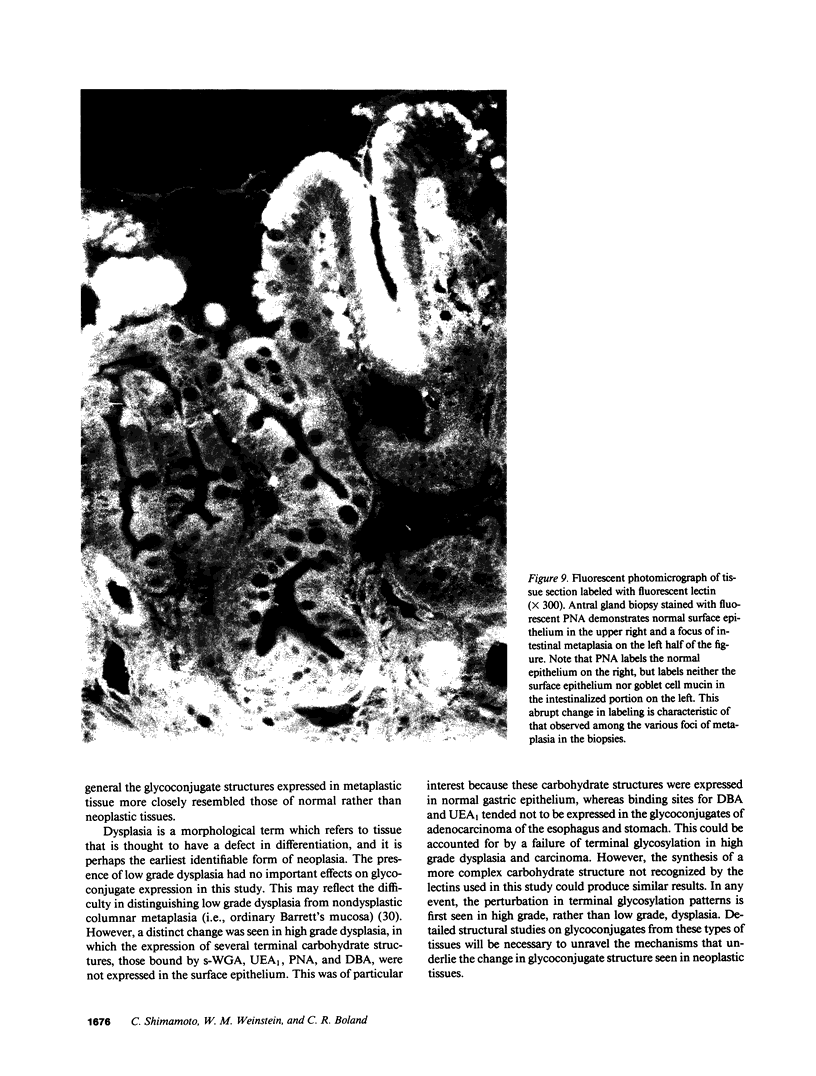
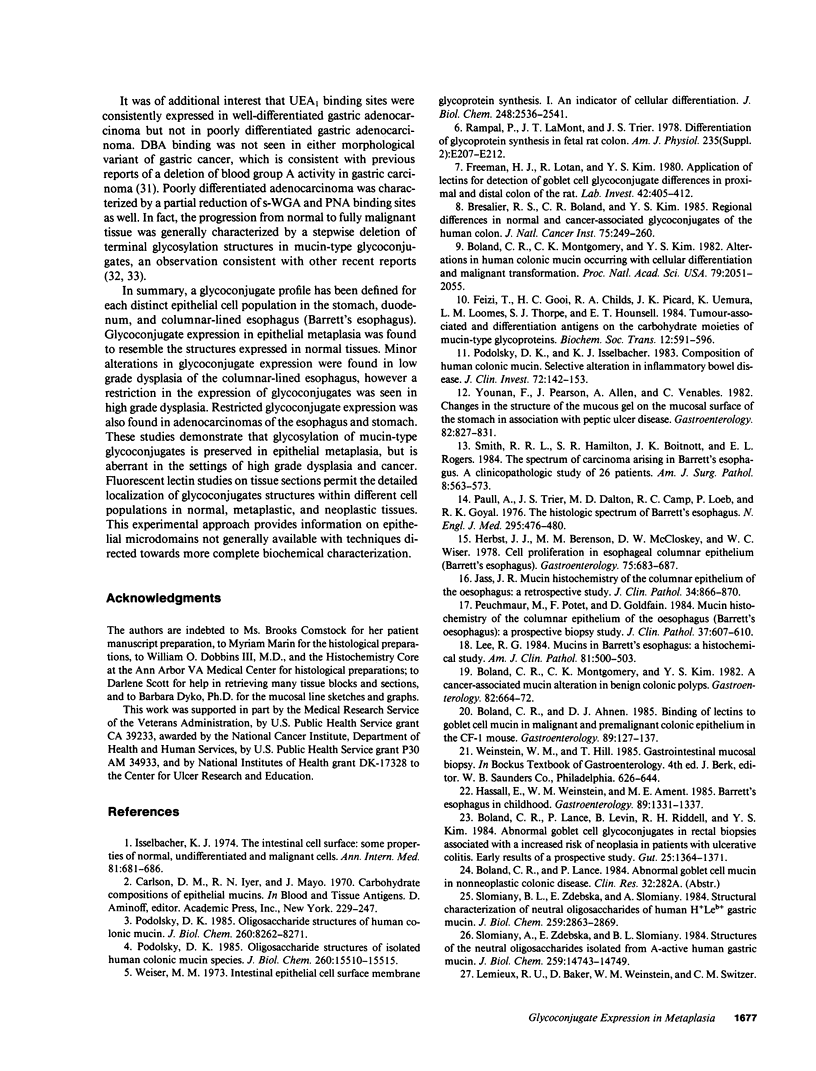

Images in this article
Selected References
These references are in PubMed. This may not be the complete list of references from this article.
- Boland C. R., Ahnen D. J. Binding of lectins to goblet cell mucin in malignant and premalignant colonic epithelium in the CF-1 mouse. Gastroenterology. 1985 Jul;89(1):127–137. doi: 10.1016/0016-5085(85)90753-x. [DOI] [PubMed] [Google Scholar]
- Boland C. R., Lance P., Levin B., Riddell R. H., Kim Y. S. Abnormal goblet cell glycoconjugates in rectal biopsies associated with an increased risk of neoplasia in patients with ulcerative colitis: early results of a prospective study. Gut. 1984 Dec;25(12):1364–1371. doi: 10.1136/gut.25.12.1364. [DOI] [PMC free article] [PubMed] [Google Scholar]
- Boland C. R., Montgomery C. K., Kim Y. S. A cancer-associated mucin alteration in benign colonic polyps. Gastroenterology. 1982 Apr;82(4):664–672. [PubMed] [Google Scholar]
- Boland C. R., Montgomery C. K., Kim Y. S. Alterations in human colonic mucin occurring with cellular differentiation and malignant transformation. Proc Natl Acad Sci U S A. 1982 Mar;79(6):2051–2055. doi: 10.1073/pnas.79.6.2051. [DOI] [PMC free article] [PubMed] [Google Scholar]
- Bresalier R. S., Boland C. R., Kim Y. S. Regional differences in normal and cancer-associated glycoconjugates of the human colon. J Natl Cancer Inst. 1985 Aug;75(2):249–260. [PubMed] [Google Scholar]
- Bur M., Franklin W. A. Lectin binding to human gastric adenocarcinomas and adjacent tissues. Am J Pathol. 1985 May;119(2):279–287. [PMC free article] [PubMed] [Google Scholar]
- Feizi T., Gooi H. C., Childs R. A., Picard J. K., Uemura K., Loomes L. M., Thorpe S. J., Hounsell E. F. Tumour-associated and differentiation antigens on the carbohydrate moieties of mucin-type glycoproteins. Biochem Soc Trans. 1984 Aug;12(4):591–596. doi: 10.1042/bst0120591. [DOI] [PubMed] [Google Scholar]
- Finan P. J., Wight D. G., Lennox E. S., Sacks S. H., Bleehen N. M. Human blood group isoantigen expression on normal and malignant gastric epithelium studied with anti-A and anti-B monoclonal antibodies. J Natl Cancer Inst. 1983 Apr;70(4):679–685. [PubMed] [Google Scholar]
- Fischer J., Uhlenbruck G., Klein P. J., Vierbuchen M., Fischer R. Characterization of glycoconjugates of human gastrointestinal mucosa by lectins. II. Lectin binding to the isolated glycoproteins of normal and malignant gastric mucosa. J Histochem Cytochem. 1984 Jul;32(7):690–696. doi: 10.1177/32.7.6429236. [DOI] [PubMed] [Google Scholar]
- Freeman H. J., Lotan R., Kim Y. S. Application of lectins for detection of goblet cell glycoconjugate differences in proximal and distal colon of the rat. Lab Invest. 1980 Apr;42(4):405–412. [PubMed] [Google Scholar]
- Hassall E., Weinstein W. M., Ament M. E. Barrett's esophagus in childhood. Gastroenterology. 1985 Dec;89(6):1331–1337. doi: 10.1016/0016-5085(85)90651-1. [DOI] [PubMed] [Google Scholar]
- Herbst J. J., Berenson M. M., McCloskey D. W., Wiser W. C. Cell proliferation in esophageal columnar epithelium (Barrett's esophagus). Gastroenterology. 1978 Oct;75(4):683–687. [PubMed] [Google Scholar]
- Isselbacher K. J. The intestinal cell surface: some properties of normal, undifferentiated, and malignant cells. Ann Intern Med. 1974 Nov;81(5):681–686. doi: 10.7326/0003-4819-81-5-681. [DOI] [PubMed] [Google Scholar]
- Lee R. G. Mucins in Barrett's esophagus: a histochemical study. Am J Clin Pathol. 1984 Apr;81(4):500–503. doi: 10.1093/ajcp/81.4.500. [DOI] [PubMed] [Google Scholar]
- Paull A., Trier J. S., Dalton M. D., Camp R. C., Loeb P., Goyal R. K. The histologic spectrum of Barrett's esophagus. N Engl J Med. 1976 Aug 26;295(9):476–480. doi: 10.1056/NEJM197608262950904. [DOI] [PubMed] [Google Scholar]
- Peuchmaur M., Potet F., Goldfain D. Mucin histochemistry of the columnar epithelium of the oesophagus (Barrett's oesophagus): a prospective biopsy study. J Clin Pathol. 1984 Jun;37(6):607–610. doi: 10.1136/jcp.37.6.607. [DOI] [PMC free article] [PubMed] [Google Scholar]
- Podolsky D. K., Isselbacher K. J. Composition of human colonic mucin. Selective alteration in inflammatory bowel disease. J Clin Invest. 1983 Jul;72(1):142–153. doi: 10.1172/JCI110952. [DOI] [PMC free article] [PubMed] [Google Scholar]
- Podolsky D. K. Oligosaccharide structures of human colonic mucin. J Biol Chem. 1985 Jul 15;260(14):8262–8271. [PubMed] [Google Scholar]
- Podolsky D. K. Oligosaccharide structures of isolated human colonic mucin species. J Biol Chem. 1985 Dec 15;260(29):15510–15515. [PubMed] [Google Scholar]
- Rampal P., LaMont J. T., Trier J. S. Differentiation of glycoprotein synthesis in fetal rat colon. Am J Physiol. 1978 Aug;235(2):E207–E212. doi: 10.1152/ajpendo.1978.235.2.E207. [DOI] [PubMed] [Google Scholar]
- Slomiany A., Zdebska E., Slomiany B. L. Structures of the neutral oligosaccharides isolated from A-active human gastric mucin. J Biol Chem. 1984 Dec 10;259(23):14743–14749. [PubMed] [Google Scholar]
- Slomiany B. L., Zdebska E., Slomiany A. Structural characterization of neutral oligosaccharides of human H+Leb+ gastric mucin. J Biol Chem. 1984 Mar 10;259(5):2863–2869. [PubMed] [Google Scholar]
- Smith R. R., Hamilton S. R., Boitnott J. K., Rogers E. L. The spectrum of carcinoma arising in Barrett's esophagus. A clinicopathologic study of 26 patients. Am J Surg Pathol. 1984 Aug;8(8):563–573. doi: 10.1097/00000478-198408000-00001. [DOI] [PubMed] [Google Scholar]
- Van Halbeek H., Dorland L., Vliegenthart J. F., Kochetkov N. K., Arbatsky N. P., Derevitskaya V. A. Characterization of the primary structure and the microheterogeneity of the carbohydrate chains of porcine blood-group H substance by 500-MHz 1H-NMR spectroscopy. Eur J Biochem. 1982 Sep;127(1):21–29. doi: 10.1111/j.1432-1033.1982.tb06832.x. [DOI] [PubMed] [Google Scholar]
- Weiser M. M. Intestinal epithelial cell surface membrane glycoprotein synthesis. I. An indicator of cellular differentiation. J Biol Chem. 1973 Apr 10;248(7):2536–2541. [PubMed] [Google Scholar]
- Younan F., Pearson J., Allen A., Venables C. Changes in the structure of the mucous gel on the mucosal surface of the stomach in association with peptic ulcer disease. Gastroenterology. 1982 May;82(5 Pt 1):827–831. [PubMed] [Google Scholar]



